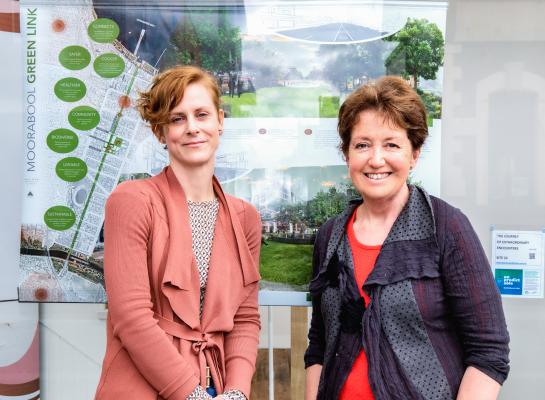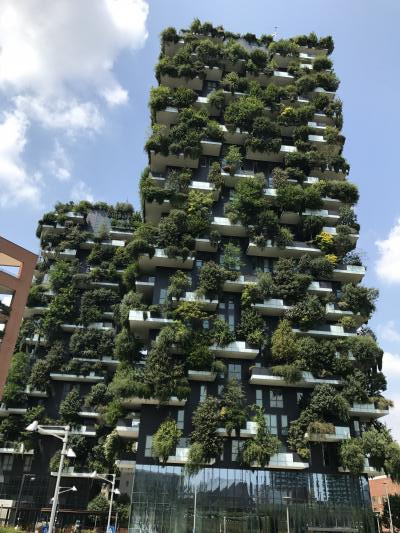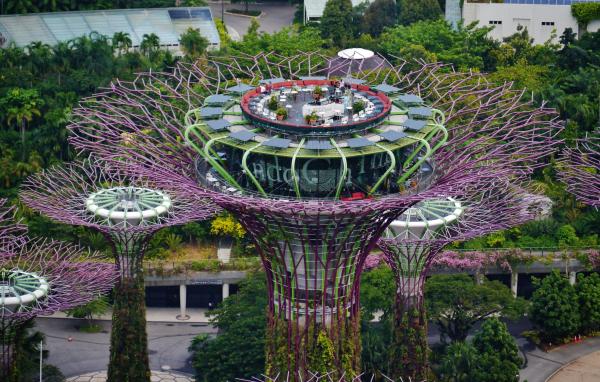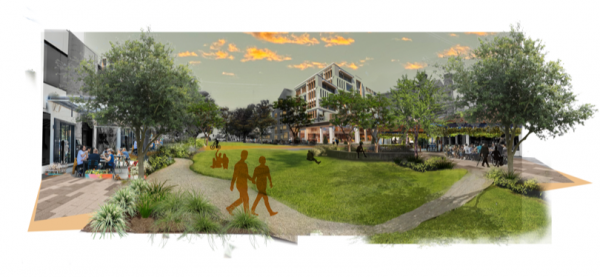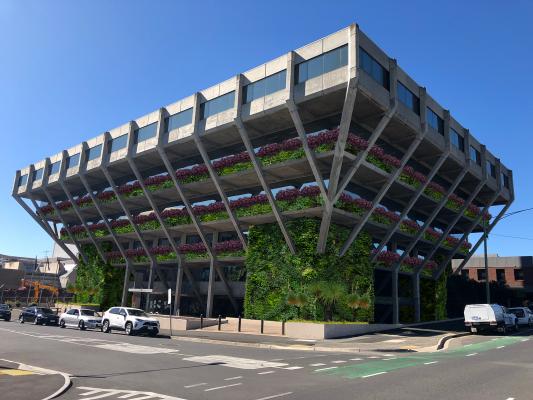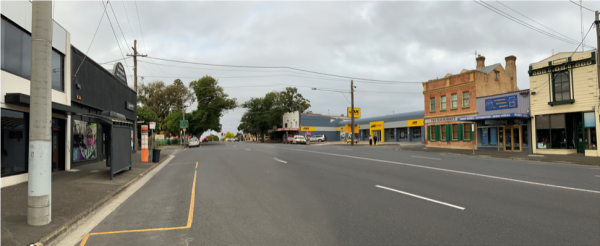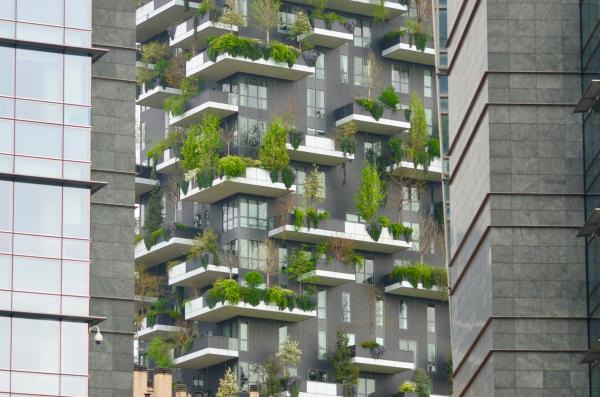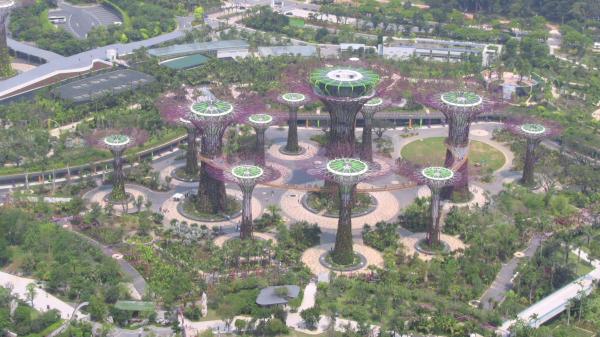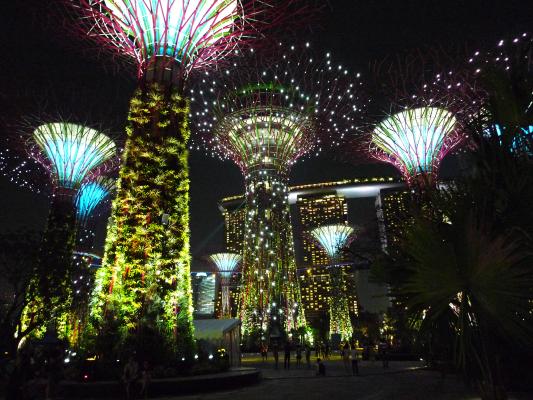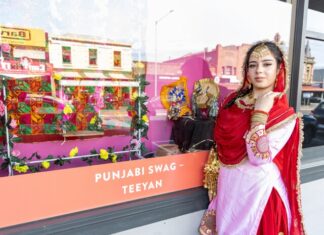Milan’s awe-aspiring Bosco Verticale and Singapore’s breathtaking Supertrees set these cities apart – could Geelong follow them down the forest path?
Luke Voogt meets some of the designers and artists pushing for Geelong to become “one of the great green cities of the world”.
Milan’s Bosco Verticale, translating to vertical woods in Italian, transformed two residential buildings into a towering 900-tree forest in 2012.
Across the world, Singapore’s Supertrees and Gardens by the Bay combine the beauty of nature with modern architecture in one of the world’s most densely populated cities.
Newtown evolutionary geneticist and artist Mary-Jane Walker points to these as examples of what Geelong could be, as she believes now is the time to begin following a similar path.
“Geelong’s at the perfect stage of its development – it’s the right size and scale,” she told the Independent.
“It could be one of the great green cities of the world.”
Dr Walker has created The Journey of Extraordinary Encounters to show Geelong reimagined as a “biophilic” city.
The digital arts trail, part of Geelong Design Week, includes 49 sites across the city featuring both real-life art and augmented reality experiences of reimagined local landmarks.
“You bring it up on your phone and it takes you to all these different sites across Geelong,” Dr Walker said.
“You walk down a street and discover birds and trees, and imagine what it could be like.
“I had the idea because of COVID-19. Regardless of what stage [of the pandemic] we were at, you could walk past the windows and see an art exhibition.”
She is a staunch advocate of biophilic design, which aims to bring nature back into urban environments through both the use of actual plants and specific architectural styles.
Multiple studies link biophilic design to lower crime, increased productivity and decreased stress levels, while biophilicly-designed hospitals can even help people heal faster, according to Dr Walker.
“We need to share our urban spaces with other species – plants and animals,” she said.
“It’s simply because we evolved in the natural world.
“How do we harness this need that we have to connect to nature in a modern urban environment?
“There are lots of different design elements that we recognise that make us feel comfortable.”
Dr Walker points to the Green Spine, a divisive project to link Geelong Botanic Gardens to Johnstone Park through Malop Street, as “a terrific example” of biophilic design.
Natural colours, geometry and the use of natural light can also make offices more enjoyable places to be, according to Dr Walker.
She cites Geelong Regional Library’s design as an example.
“You can have a perfectly modern city – you don’t have to live in caves,” she said.
“You’ve really got to design that inside space to be healthy.”
Melbourne landscape architect Georgina de Beaujeu, who is studying a PhD at Deakin University’s waterfront campus, reimagined a part of Moorabool Street for the digital art journey.
Ms de Beaujeu won the NSW Public Space Ideas Competition’s street category last November for reimagining of a dull throughway in suburban Sydney.
She chose the Farefield street due to its high density and growth, socio-economic disadvantage and lack of green space.
“It shouldn’t just be about being wealthy to live in an area that’s beautiful and green, that brings all the health benefits that studies show it does.”
She used similar principles in designing her plan to “reclaim” Moorabool Street for parkland stretching between McKillop and Little Myers streets.
“I had to think, ‘what are the issues for Geelong?’” she said.
“The density is not quite the same as in Fairfield and Sydney.”
Her concept also involves “greening” the entirety of Moorabool Street and even introducing trackless trams, currently being explored in Melbourne’s west, to help people get around.
“It’s an absolute no-brainer,” she said.
“It’s about acknowledging there is going to be quite significant population growth in Geelong.
“We can’t keep doing things the way that we have. You’re going to have six-storey-plus places in central Geelong.
“If everybody is driving a car and parking in the street it’s just not going to be possible.”
While she acknowledged local opposition to closing off roads in central Geelong, she promoted the benefits of green spaces.
“Everyone has gone to the park with family and sat on the grass under beautiful old trees,” she said.
“Or imagine you’re walking through a city with no shade on a 42 degree day, and suddenly you come across an avenue of trees and feel cooler – that relief – I think everyone can relate to that.
“You multiply that in a biolphilic city and you could feel like that always.
“The importance of nature in helping to connect people with each other and their environment is really important.”
Another augmented reality image, by environmental consultant Rachel Cooper, reimagines Geelong’s imposing state offices.
“It’s such a striking design,” she said.
The building divides locals.
Some laud its ‘brutalist’ architecture characterised by a massive, monolithic and blocky appearance with a rigid geometric style and large-scale use of concrete.
Others despise the grey concrete building.
Ms Cooper hopes her greener version of the building will impress both its fans and critics.
“It was really about how we could reflect the architecture of the building and not take away anything from that, but make it more biophilic,” she said.
“It doesn’t adhere strictly to the brutalist architecture – it softens up it a bit. But you can still see those very strong lines throughout the building.
“I’m a fan of using plants to enhance architecture rather than having them look left and overgrown.
“You’re using plants but you’re using them in a structured and mindful way.”
Like Dr Walker, Ms Cooper believes transforming Geelong into a great green city would not only make residents happier, but would draw people from across the world.
“It gives it a name and, certainly in terms of Australian cities, puts it on the map,” she said.
“If you had a couple of landmark buildings that made a statement that would certainly set it apart.
“If people are inspired [by the digital arts trail] to take it to the next stage and bring that vision to life – that would be amazing.”
Details: theschooloflostarts.com.au/events


